Arriving in Ahmedabad at 5.30am was not pleasant, but it was a blessed relief to get off that stinking bus. I could see from the windows (the bits not obscured by vomit) that this city was different to many I had visited. The roads were wider, generally in good condition, lacking wandering livestock and relatively clean.
I managed to find an auto rickshaw which sped through the city to the Kameron Palace, the hotel the American lady Kim I had met in Kutch, had suggested
. Once I had awoken the staff asleep in the foyer, I checked in and went straight to sleep in my room, on what turned out to be a very comfortable bed.
I awoke at lunchtime, to find myself in the centre of the old city. It was an atmospheric location if somewhat chaotic compared the streets I had seen on the way here in the bus. I took a short walk around the narrow lanes and came across the majestic and centrally located famous House of MG Hotel. Slap bang in the centre of town this was one of the most atmospheric hotels in India and I decided I would take breakfast there the next day. Opposite this hotel was Sidi Sayid’s Mosque which was part of the original citadel built in 1411. The Mosque is famous for the ten windows of stone tracery and a large neighbouring tree. I was able to walk right into the Mosque as it was open sided and in the evening I was able to watch prayers from outside the gates. The windows were exquisite and changed in appearance according to the light and the time of day
.
Opposite the House of MG was a rather shabby looking restaurant called the New Lucky. To the casual walker, nothing seems remotely interesting about the New Lucky, but once inside, you realise that its most unusual. Inside to the left by the cashier and surrounded by tables and chairs is a huge tree trunk, which you have to duck underneath to reach the washbasin. Its when you venture to the washbasin that the restaurant’s real notoriety becomes obvious, as on the ground next to the tables are several graves. These graves have flowers and railings preventing clients from stepping on them. If you are lucky enough to be eating at prayer time, you can witness incense sticks being lit and placed on the grave next to your table. “Oh we don’t know who they are!” mentioned the waiter, “but they keep us company.” Certainly adds a new dimension to your Masala Dhosa.
After the New Lucy I headed into the old market in the old Muslim quarter. This was in the middle of the old city, connected to the citadel by many windy cluttered streets. The market area was accessed through some old city gates which were difficult to appreciate due to the volume of the people. Clothes, kitchen utensils, luggage, knifes, belts, shoes were all being sold on small tables or laid out on the floor. The selection was indeed vast
. People, rickshaws, dogs, an occasional cow all pressed into one heaving mass around these stall holders. I stopped for chai and then resumed the investigation. It was loud, smelling, claustrophobic and bustling, with people arguing, bargaining or just plain shouting. Sari clad women mixed with covered women, men with coloured turbans mixed with men wearing topi caps. It was colourful and visually intoxicating.
That evening I visited the restaurant that Denis and Camile had recommended, called the Nutan and enjoyed a good Jalfrezi. I slept well in the Kameron. The next day I was determined to do some chores, so after my breakfast at the House of MG I went off across the river to the new part of town, where I had to by some medicine. Then some camera stuff followed. Each time I encountered such helpfulness and kindness from the locals. If I got lost (which is easy in India - no signage), people would stop what they were doing and offer to guide me
.
Whilst looking for the camera shop I passed the Gandhi Memorial. This turned out not to be his Ashram, but just a house with some displays in Hindi. Actually the only access was via the back door of a shop and once inside two groundsmen eyed me suspiciously. Nobody spoke English so I did not really learn much except that it was not the right place.
On ascertaining that the Ashram was some four kilometres away, I hailed a rickshaw, and headed north. The Ashram was founded by Gandhi in 1930 and was the starting point for his famous Salt March. The Ashram or retreat still functions and contains a school for Harijan girls. In the corner of the site, his rooms have been preserved and there is a large exhibition dedicated to his life and work with many photographs and some original documents. It was all very interesting and I found it much more engrossing than I thought I would
. Certainly the rooms, the photographic exhibits and Gandhi’s letter to Adolf Hitler were fascinating. At the bookshop I treated myself to a biography, something I had been meaning to read for years.
The next morning I arranged to be collected by a rickshaw for a ten kilometre trip south west to Sarkhej Roza. This 34 ha complex (originally 72 ha) was built in the 15th century to house the tombs of Mahmud Bergada and his wife. The architecture is a fusion of Jain, Hindi and Muslim styles and it is particularly famous for its lattice windows and the Mosque. All of this looked out over a vast artificial reservoir or Hauz and adjacent gardens and pavilions. This magnificent place had unfortunately fallen into a poor state of repair, but in a way the ruinous state made it that more special. The Hauz area was particularly poor. Nevertheless the site is exceptional and the tombs and the Mosque still quite amazing. The complex was built by a number of sultans over the years, but the main part, the mausoleum and the mosque was completed in 1451 by Qutub-ud-din Ahmed Shah, one of the four original Ahmeds of Ahmedabad.
I was particularly fascinated by the intricately carved stone screens and the mausoleum itself. The carved stoned screens were very intricate and made beautiful patterns on the floor with the warm golden morning sunlight. The mausoleum had several pilgrims inside and the curator told me was visited by a British Muslim group several weeks before, from Doncaster. It was very impressive with many pillars inspired by Jain architecture littering the building. This turned out to be an excellent visit and I was there for four hours. I had also arrived there at 6.00am so not only was I alone, but the golden rays of the early morning sun just enhanced the lattice work around the mausoleums.
That night I met up with Denis and Camile who had just arrived in Ahmedabad after leaving Diu. We had a delicious meal at the the Hutong restaurant and it was good to catch up on all the happenings back at Diu. After dinner on the way back to the hotel I met a local man called Jagdesh who happened to run a home stay in the centre of Ahmedabad, and I thought this seemed a much better option than another hotel, when I returned to the city. He also offered to take me on a photographic trip around the old city.
The next morning I packed up and left for the railway station on my return trip to Bhuj.
Restaurant Tombs, Mosques, Markets
Sunday, December 28, 2014
 Ahmedabad, Gujarat, India
Ahmedabad, Gujarat, India
Other Entries
-
76Car Crash, Chachas, Mules and Blood
Sep 18101 days prior Chachapoyas, Peruphoto_camera4videocam 0comment 0
Chachapoyas, Peruphoto_camera4videocam 0comment 0 -
77Kuelap, Mummies, Ruins, Hummingbirds
Sep 2594 days prior Leymebamba, Peruphoto_camera6videocam 0comment 0
Leymebamba, Peruphoto_camera6videocam 0comment 0 -
78Sarcophagi, Fountains of Blood, Horseback
Sep 2891 days prior Cuispes, Peruphoto_camera3videocam 0comment 0
Cuispes, Peruphoto_camera3videocam 0comment 0 -
79Waterfalls, Rain and Loud Peruvian Pop Music
Sep 2990 days prior Pedro Ruiz, Peruphoto_camera4videocam 0comment 0
Pedro Ruiz, Peruphoto_camera4videocam 0comment 0 -
80Hummingbirds, Orchids, Coffee and Stomach Bugs
Oct 0287 days prior Moyobamba, Peruphoto_camera5videocam 0comment 0
Moyobamba, Peruphoto_camera5videocam 0comment 0 -
81Battlefields, Zulus, 1879, Leaving South Africa
Oct 1871 days prior Dundee, South Africaphoto_camera4videocam 0comment 0
Dundee, South Africaphoto_camera4videocam 0comment 0 -
82Mr India, X Factor Naga style, Exotic Food
Nov 0652 days prior Mokokchung, Indiaphoto_camera5videocam 0comment 0
Mokokchung, Indiaphoto_camera5videocam 0comment 0 -
83Burma, Headhunters, Opium & Dust
Nov 0949 days prior Launghe, Myanmarphoto_camera4videocam 0comment 0
Launghe, Myanmarphoto_camera4videocam 0comment 0 -
84History, bad guesthouses, hills, Wakching
Nov 1444 days prior Mon, Indiaphoto_camera4videocam 0comment 0
Mon, Indiaphoto_camera4videocam 0comment 0 -
85Skulls, Fertility, Opium, Anghs, Warriors
Nov 1741 days prior Shengnya, Indiaphoto_camera5videocam 0comment 0
Shengnya, Indiaphoto_camera5videocam 0comment 0 -
86Elders, Changs, Culture, Families and Skulls
Nov 2236 days prior Tuensang, Indiaphoto_camera5videocam 0comment 0
Tuensang, Indiaphoto_camera5videocam 0comment 0 -
87Sangai Festival - Kang, Hockey/Wrestling, Polo etc
Nov 2830 days prior Imphal, Indiaphoto_camera5videocam 0comment 0
Imphal, Indiaphoto_camera5videocam 0comment 0 -
88Hornbill Festival, Loin Looms & Naga Culture
Dec 1018 days prior Kohima, Indiaphoto_camera10videocam 0comment 0
Kohima, Indiaphoto_camera10videocam 0comment 0 -
89Birds, Rubbish, Grasslands, Rubble, Tribes etc
Dec 1414 days prior Nakhatrana , Indiaphoto_camera5videocam 0comment 0
Nakhatrana , Indiaphoto_camera5videocam 0comment 0 -
90Embroidery, Rogan, Block Printing, Tribes
Dec 1711 days prior Bhuj, Indiaphoto_camera5videocam 0comment 0
Bhuj, Indiaphoto_camera5videocam 0comment 0 -
91Lions, Nitin, Bird Spotting, Sleeper Bus Part 1
Dec 217 days prior Gir, Indiaphoto_camera6videocam 0comment 0
Gir, Indiaphoto_camera6videocam 0comment 0 -
92Island Life, Portuguese Colony, Christmas
Dec 253 days prior Diu, Indiaphoto_camera4videocam 0comment 0
Diu, Indiaphoto_camera4videocam 0comment 0 -
93Restaurant Tombs, Mosques, Markets
Dec 28 Ahmedabad, Indiaphoto_camera5videocam 0comment 0
Ahmedabad, Indiaphoto_camera5videocam 0comment 0 -
94Birds, NYE, Dhows, Feral Dogs, Shaves
Dec 313 days later Mandvi, Indiaphoto_camera6videocam 0comment 0
Mandvi, Indiaphoto_camera6videocam 0comment 0 -
95Blue Moon, Salt Flats, Crafts
Jan 025 days later Bhujodi, Indiaphoto_camera5videocam 0comment 0
Bhujodi, Indiaphoto_camera5videocam 0comment 0 -
96Calico Musuem, Festival Prep, Street Life
Jan 069 days later Ahmedabad, Indiaphoto_camera5videocam 0comment 0
Ahmedabad, Indiaphoto_camera5videocam 0comment 0 -
97Leopards, Shepherds, Turbans and Aristocrats
Jan 1114 days later Bhenswara, Indiaphoto_camera5videocam 0comment 0
Bhenswara, Indiaphoto_camera5videocam 0comment 0 -
98Birds, Fog, Bad Internet, Old Friends
Jan 1417 days later Jodhpur, Indiaphoto_camera7videocam 0comment 0
Jodhpur, Indiaphoto_camera7videocam 0comment 0 -
99Tigers Tigers Tigers Tigers and oh Tigers
Jan 1720 days later Sawai Madhopur, Indiaphoto_camera6videocam 0comment 0
Sawai Madhopur, Indiaphoto_camera6videocam 0comment 0 -
100Trains, Rodents, Rip offs, Delhi and Gentle
Jan 2528 days later Delhi, Indiaphoto_camera3videocam 0comment 0
Delhi, Indiaphoto_camera3videocam 0comment 0 -
101Sand, Masks, Forest Man, Monks & Bamboo
Feb 0236 days later Majuli, Indiaphoto_camera8videocam 0comment 0
Majuli, Indiaphoto_camera8videocam 0comment 0 -
102Julius, Gibbons, Park Fees, Tea & Gymkhana
Feb 0539 days later Jorhat, Indiaphoto_camera5videocam 0comment 0
Jorhat, Indiaphoto_camera5videocam 0comment 0 -
103Houseboats, Dolphins, Rain and Animal Planet
Feb 1044 days later Tinsukia, Indiaphoto_camera5videocam 0comment 0
Tinsukia, Indiaphoto_camera5videocam 0comment 0 -
104Tezu family home, TV Mike, Huts, Cows, River Wash
Feb 1448 days later Tezu, Indiaphoto_camera5videocam 0comment 0
Tezu, Indiaphoto_camera5videocam 0comment 0 -
105Sumos, Boulders, Oranges, Idu Mishmi
Feb 1751 days later Roing, Indiaphoto_camera5videocam 0comment 0
Roing, Indiaphoto_camera5videocam 0comment 0 -
106Motorbikes, Idu Mishmi, Hats, Illness, Scenary
Feb 1953 days later Anini, Indiaphoto_camera9videocam 0comment 0
Anini, Indiaphoto_camera9videocam 0comment 0 -
107Nyokum Yullo, Nishi people, ferries, chain dance
Feb 2256 days later Itanagar, Indiaphoto_camera5videocam 0comment 0
Itanagar, Indiaphoto_camera5videocam 0comment 0 -
108Paddies, Plugs, Tattoos, Weddings, Bamboo, Spirits
Feb 2458 days later Ziro, Indiaphoto_camera5videocam 0comment 0
Ziro, Indiaphoto_camera5videocam 0comment 0 -
109Post Office, Hari's Help, Tourist Apartheid
Mar 0163 days later Guwahati, Indiaphoto_camera3videocam 0comment 0
Guwahati, Indiaphoto_camera3videocam 0comment 0 -
110Hornbills, Eco Lodge, Birds, Elephants & Nameri NP
Mar 0365 days later Tezpur, Indiaphoto_camera5videocam 0comment 0
Tezpur, Indiaphoto_camera5videocam 0comment 0 -
111Plans Changing, Bus tyres, early closing museums
Mar 0870 days later Kohima, Indiaphoto_camera2videocam 0comment 0
Kohima, Indiaphoto_camera2videocam 0comment 0

 Ahmedabad, Gujarat, India
Ahmedabad, Gujarat, India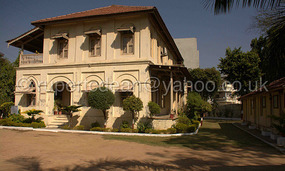
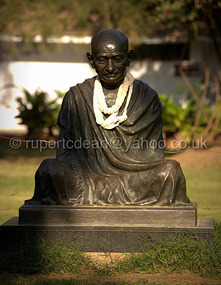
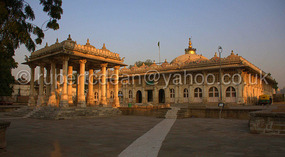
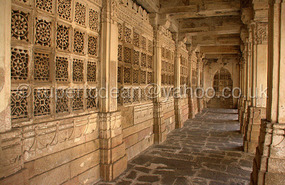
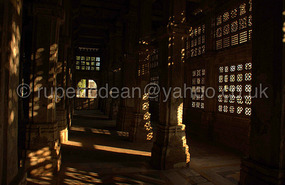




2025-05-22